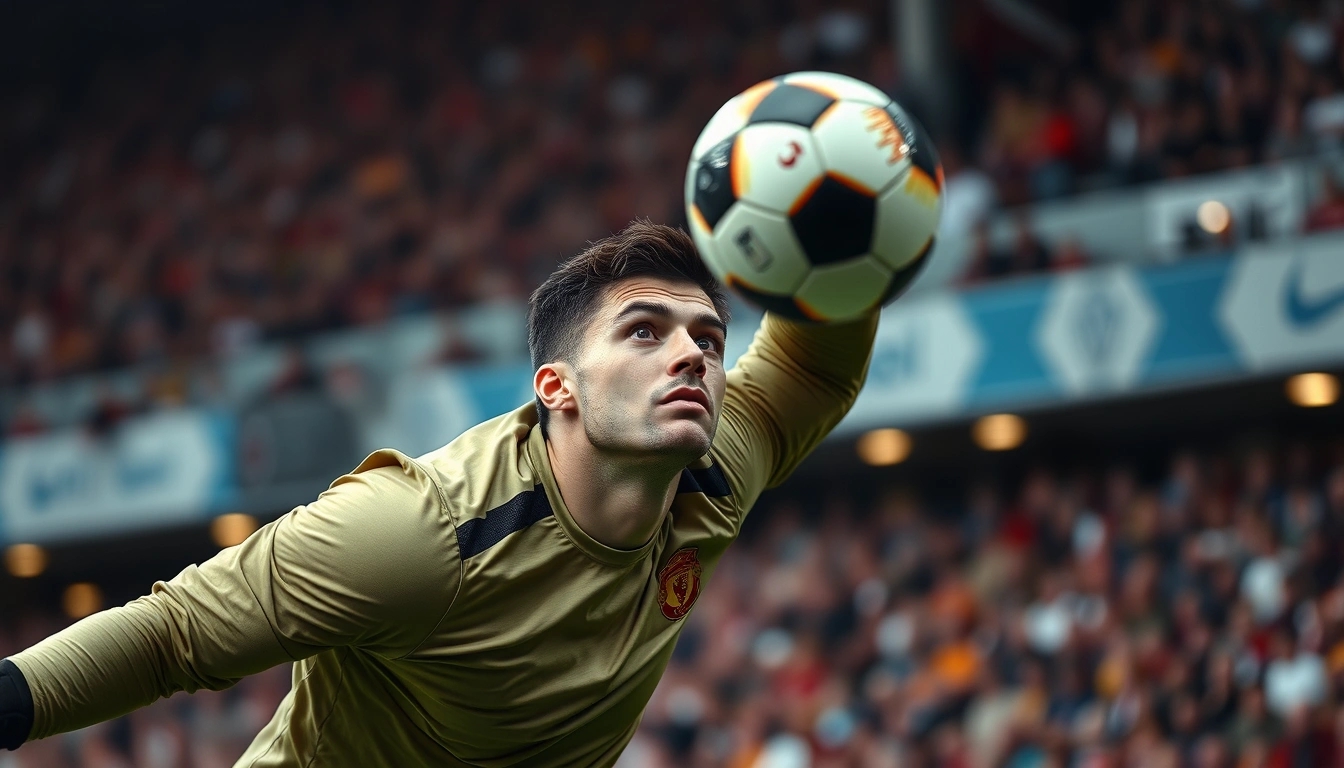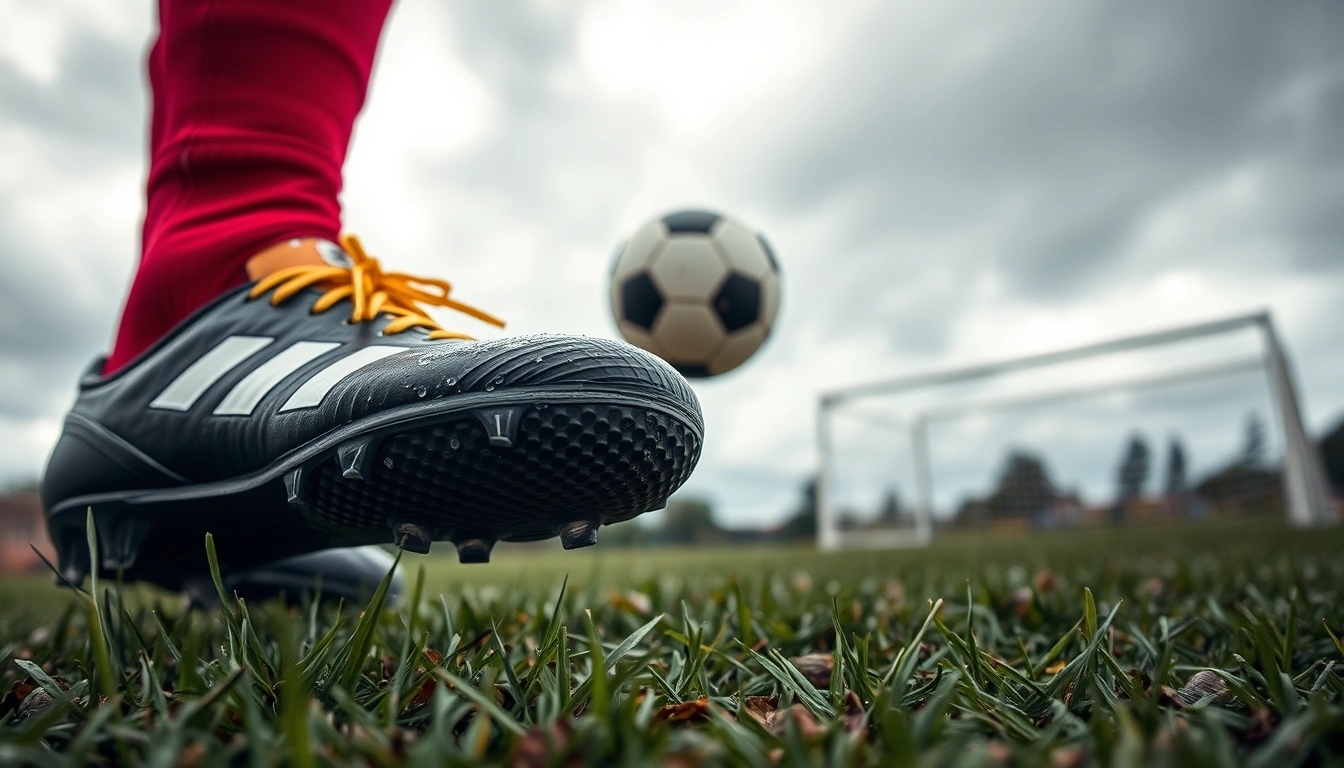Controlling high balls when the heat is on? Oh, that’s a whole different beast. It’s not just about fancy footwork or raw skill; it’s about keeping your cool when the ball’s dropping from the sky and defenders are breathing down your neck like they’re auditioning for a horror flick. If you want to own the game and keep possession in those nail-biting moments, you’ve got to master this art. So, let’s roll up our sleeves and get into the nitty-gritty with some straight talk and hands-on tips.
Why Are High Balls So Tricky?
- First off, the ball’s coming down fast, and you’ve got maybe a second to react.
- Opponents aren’t just standing there admiring your skills; they’re charging at you, ready to pounce.
- Wind, pitch conditions, and even your nerves play their part in making the ball unpredictable.
It’s no wonder controlling high balls separates the pros from the weekend warriors. You either get it right or you’re gifting the ball away like it’s Christmas.
Body Positioning: Your Secret Weapon
| Aspect | Why It Matters | Pro Tip |
|---|---|---|
| Balance | Keeps you steady to absorb impact | Keep knees slightly bent, weight on balls of feet |
| Body Angle | Positions you to shield the ball from opponents | Turn slightly sideways, chest facing the ball |
| Arms | Use them to maintain space and balance | Keep elbows out but relaxed, ready to fend off challenges |
If your stance’s off, you might as well be trying to catch jellyfish. The right posture is what lets you tame that incoming ball instead of fumbling it like a rookie.
Timing Your Touch: Cushion or Drive?
Timing is a slippery fish here. Sometimes you want to cushion the ball, letting it gently drop to your feet, giving you time to plan the next move. Other times, you gotta drive it forward hard and fast to keep the attack alive or beat the press. How do you decide? Well, it’s a mix of instinct, game sense, and a pinch of luck.
- Cushioning: Use your chest or thigh to slow the ball down, absorb its momentum, and keep control.
- Driving: Use the foot or thigh to push the ball forward quickly, catching defenders off guard.
Remember, hesitating is a killer here. You either commit or you lose out.
Body Parts Breakdown: Chest, Thigh, and Foot
Chest: Perfect for soft control, especially when the ball is dropping straight down.Thigh: Great for redirecting the ball or cushioning when it’s coming at an awkward height.Foot: Ideal for quick touches and pushing the ball into space.
Each part has its moment to shine. The trick is knowing when to use what, which only comes from practice and a bit of street smarts.
Dealing with Opponents: Shield Like a Pro
When defenders are on your tail, you gotta be part player, part bodyguard. Use your arms and hips to create space, keep your eyes peeled, and anticipate their moves. Awareness is your best mate here; if you’re not alert, you’ll lose the ball faster than you can say “offside.”
Mental Toughness: Keep Your Head
Let’s be honest, the crowd roaring, the pressure mounting—sometimes it feels like the world’s ending. But the best players? They thrive in chaos. Staying calm, focusing on the ball, and blocking out distractions is what separates the legends from the also-rans.
Training Drills to Boost Your Game
| Drill | Purpose | How to Do It |
|---|---|---|
| Wall Throws | Improve reaction and control | Throw the ball against a wall at different heights and control it on the bounce |
| Pressure Simulation | Get used to defenders closing in | Practice receiving high balls with a teammate applying light pressure |
| Body Positioning Practice | Perfect your stance and shielding | Use cones and markers to simulate opponents and work on positioning |
Practice these often and you’ll see your confidence soar.
Common Pitfalls and How to Dodge Them
- Jumping too early or too late — timing is everything.
- Looking away from the ball — keep your eyes glued to it.
- Not using your body to shield — you’re not just a ball magnet, you’re a fortress.
Avoid these and you’re halfway to mastering high ball control.
Gear and Conditions: The Unsung Factors
Believe it or not, your boots and the weather can mess with your control. Wet pitches make the ball slippery, and the wrong shoes can mean less grip and more slips. Keep your gear in check and adjust your playstyle to the conditions.
So, there you have it — the real deal on controlling high balls under pressure. It’s messy, it’s tough, but with some grit and practice, you can turn those scary moments into your shining ones. Now, go out there and show those high balls who’s boss!
Understanding the Challenge of High Balls
High balls – ah, the bane of many a player’s existence. They look so simple from the sidelines, right? Just a ball coming down from the sky. But get yourself on the pitch, with opponents racing towards you like it’s the last slice of pizza, and suddenly, it’s a whole different story. Controlling high balls under pressure isn’t just about having good hands or fancy footwork; it’s a mental and physical juggling act that separates the weekend warriors from the true pros.
Let’s face it, when that ball is dropping from above, your brain has about a millisecond to decide: chest it down softly, thigh trap it, or get that foot out and volley it forward? And all this while someone’s breathing down your neck, ready to snatch the ball away. It’s not just about technique; it’s about nerves, timing, and a sprinkle of luck.
| Common Challenges | Why They Matter |
|---|---|
| Judging the Ball’s Trajectory | Misreading the flight path can lead to missed control or turnovers. |
| Opponent Pressure | Close defenders limit your space and time, forcing rushed decisions. |
| Body Positioning | Poor stance makes it harder to absorb or redirect the ball smoothly. |
| Environmental Factors | Wind, rain, or uneven ground can throw off your timing and balance. |
Here’s the kicker: the challenge isn’t just the ball itself, but the entire circus happening around you. The crowd noise, the sweat dripping down your forehead, the fear of messing up in front of everyone – it all adds up. And trust me, even the best players have those “oh no” moments when a simple high ball turns into a disaster.
- Pressure makes diamonds, they say. Well, in this case, it either makes diamonds or shatters you into pieces.
- Learning to control high balls under pressure is like learning to dance in a hurricane – you gotta stay balanced, focused, and ready to adapt.
- It’s not just a physical skill; it’s a mindset. You have to believe you can tame that beast of a ball, no matter what’s coming at you.
So, why does this skill separate the pros from the rest? Because controlling high balls under pressure means you can keep possession, slow the game down, and create opportunities. It’s the difference between a sloppy turnover and a slick play that gets your team buzzing.
Pro Tip: Always keep your eyes on the ball, but don’t forget to be aware of your surroundings. Knowing where your opponents and teammates are can give you that extra edge when deciding how to control the ball.
In the end, mastering high balls isn’t about magic or luck – it’s about practice, patience, and a bit of guts. So next time you’re staring up at that descending ball with defenders closing in, remember: it’s your moment to shine or stumble. Choose wisely.
Body Positioning: The Unsung Hero
Let’s get real for a second—handling high balls isn’t just about having fancy footwork or insane reflexes. Nah, it’s way more about how you stand and move your body before that ball even lands near you. Think of it like this: your body is the foundation, the secret sauce that either sets you up for a smooth catch or a complete disaster. And honestly, most players underestimate this part. They rush in, arms flailing, hoping for the best. Spoiler alert: that rarely works.
So, what’s the deal with stance? First off, you want to be balanced. Not like standing on one leg doing yoga, but feet shoulder-width apart, knees slightly bent, ready to spring into action. This stance isn’t just about looking cool; it’s about having control. When the ball’s coming down fast and defenders are closing in, you need to be able to adjust on the fly—lean forward, shift weight, pivot—without losing your footing.
- Keep your center of gravity low: This helps with stability and quick reactions.
- Face the ball: Sounds obvious, but you’d be surprised how often players get caught turning their backs or looking away.
- Arms ready but relaxed: Tensed arms mean stiff reactions; relaxed arms mean you can absorb the ball better.
Now, here’s the kicker—pressure changes everything. When the crowd’s roaring and an opponent’s breathing down your neck, your body naturally wants to tense up or flinch. That’s when you gotta fight the urge. Stay grounded. Keep your stance solid. Imagine you’re a tree in a storm, not a leaf blowing around. Easier said than done, right? But with practice, it becomes second nature.
| Common Mistakes in Body Positioning | How to Fix Them |
|---|---|
| Standing too upright, losing balance | Bend knees slightly, lower center of gravity |
| Turning away from the ball | Keep eyes locked on the ball, adjust body angle |
| Arms too stiff or too loose | Practice relaxed arm positioning for better control |
And don’t forget about the subtle things—like how you angle your hips or where you place your feet relative to the ball’s trajectory. These tiny adjustments can mean the difference between clean control and fumbling under pressure. It’s not glamorous, but mastering your body positioning is like having a secret weapon in your back pocket.
In a nutshell? Nail your stance and body control, and you’re already halfway to bossing those high balls. Ignore it, and you’re just asking for trouble. So next time the ball’s flying high and fast, remember: it ain’t just about catching it—it’s about owning your space and your body first.

Timing Your Touch: When to Cushion and When to Drive
Timing, folks, is the secret sauce in mastering high ball control under pressure. It’s not just about getting to the ball; it’s about knowing exactly how and when to make your move. You’ve got split seconds to decide—do you gently cushion the ball, letting it settle like a feather, or do you smash it forward, pushing the play aggressively? And no, there’s no one-size-fits-all answer. It’s a mix of instinct, experience, and a pinch of madness.
Picture this: the ball’s dropping from the sky, defenders closing in like sharks smelling blood. If you’re too soft, you risk losing the ball; too hard, and you might send it flying into no-man’s land. The trick? Reading the game situation like a hawk eyeing its prey. If your team’s under siege, cushioning the ball to keep possession might be your best bet. But if you smell a counterattack brewing, driving the ball forward with purpose can catch the opposition off guard.
| Scenario | Best Touch | Why? |
|---|---|---|
| Under heavy pressure, teammates nearby | Cushion softly | Maintains possession, allows quick pass or dribble |
| Space ahead, teammates sprinting forward | Drive forward | Initiates fast break, exploits open spaces |
| Uncertain pressure, time to think | Controlled cushion | Buys time, sets up next move |
Now, here’s a little secret not many coaches will shout from the rooftops: timing isn’t just about when you touch the ball, but how you prepare your body before that touch. If you’re tense, you’re toast. Relax those muscles, breathe, and anticipate the ball’s trajectory. The moment you see it coming, decide—soft or hard, quick or measured. And don’t be afraid to mix it up. Predictability is the enemy.
- Cushioning is all about absorbing the ball’s energy, using your foot, thigh, or chest like a shock absorber. This technique is perfect when you want to keep the ball close and control the pace.
- Driving means transferring energy back into the ball, pushing it forward with intent. It’s your go-to when launching an attack or escaping a tight spot.
Here’s the kicker: sometimes the ball’s trajectory and your body position force your hand—or foot, rather. If you’re off-balance or caught flat-footed, you might end up smacking the ball into the stands or, worse, gifting it to the opponent. So, practice your footwork and balance relentlessly. It’s the foundation of good timing.
Tips for Practicing Timing:- Use a partner to toss high balls at varying speeds.- Practice cushioning with different body parts.- Work on driving the ball forward with controlled power.- Simulate pressure by adding defenders or time constraints.- Record yourself to spot timing errors and adjust.
In the end, timing your touch isn’t just a skill—it’s an art form, a dance between you, the ball, and the chaos around you. Nail it, and you’re halfway to owning the game; mess it up, and well, you’re just another player chasing shadows. So get out there, mess around, make mistakes, and learn when to be gentle and when to hit the gas. The clock’s ticking, champ.
Using Your Chest, Thigh, and Foot: Techniques Explained
Alright, let’s get down to brass tacks here — controlling high balls isn’t just about luck or fancy footwork. It’s about knowing exactly which part of your body to use and when. Each body part plays a unique role, and mastering these can turn a chaotic moment into pure magic on the pitch. So, buckle up, because we’re diving into the nitty-gritty of how to tame those pesky high balls with your chest, thigh, and foot.
The Chest: Your First Line of Defense
Your chest is like the trusty gatekeeper. When a ball is coming down fast and high, slamming it to the ground or right into your control zone can be a game-changer. The key here is to relax your chest muscles just enough to absorb the impact without bouncing the ball away. Too stiff, and the ball will go flying; too soft, and you’ll lose control.
- Tip: Lean back slightly and puff out your chest to create a bigger surface area.
- Watch out: Don’t tense up like you’re about to get hit — that’s a rookie mistake.
When done right, your chest acts like a soft cushion, gently bringing the ball down to your feet or allowing you to quickly pass it off. It’s all about timing and body control.
The Thigh: The Mid-Air Magician
Now, the thigh is a bit of an unsung hero. When the ball is coming at you at a medium height, your thigh is the perfect tool for controlling it. It’s like a trampoline — you want to absorb the ball’s energy and then direct it exactly where you want.
| Thigh Control Technique | What to Do | Common Mistakes |
|---|---|---|
| Lift and soften | Raise your thigh to meet the ball and slightly bend your knee to absorb impact | Stiff leg causing the ball to bounce away uncontrollably |
| Direct the ball | Angle your thigh to guide the ball forward or to your preferred foot | Not adjusting thigh angle, losing ball direction |
Pro tip: Keep your eyes on the ball until contact, and don’t rush. A calm thigh touch can give you precious seconds to decide your next move.
The Foot: The Finisher
Finally, the foot. When the ball is dropping low or you want to take control right before it hits the ground, your foot is your best friend. There’s a bit of finesse required here — you’re not just kicking the ball away; you’re receiving it.
- Inside foot: Great for cushioning the ball softly and setting up a pass or dribble.
- Sole of the foot: Used to stop the ball dead in its tracks.
- Instep: Perfect for controlling balls that are bouncing or rolling towards you.
The trick? Be patient. Don’t panic and boot the ball away like it’s a hot potato. Instead, angle your foot slightly upward, relax your ankle, and let the ball settle.
Quick Summary Table: Body Part Roles in High Ball Control
| Body Part | Ideal Ball Height | Primary Function | Key Tip |
|---|---|---|---|
| Chest | High, descending balls | Absorb and soften impact | Relax muscles and lean back slightly |
| Thigh | Mid-level balls | Trap and redirect | Lift thigh, bend knee, angle properly |
| Foot | Low balls or just before ground contact | Cushion and prepare for next move | Relax ankle, use inside or sole |
Look, no one said this stuff is easy. It takes practice, patience, and sometimes a bit of trial and error — like that embarrassing moment when you try to chest the ball and it bounces off your chin. Hey, we’ve all been there. But once you get the hang of these techniques, controlling high balls will feel less like a gamble and more like second nature.
So next time you’re under pressure and a high ball is coming your way, remember: your chest, thigh, and foot aren’t just body parts — they’re your secret weapons. Use them wisely, and watch how you start bossing those aerial battles like a pro.
Dealing with Opponents: Shielding and Awareness
Ah, the thrill of having an opponent practically breathing down your neck while you’re trying to control that high ball! It’s like trying to enjoy a quiet coffee in a packed café where everyone’s shouting. Pressure is real, and it can mess with your game if you’re not prepared. But hey, don’t sweat it — this is where shielding and awareness come into play, and trust me, mastering these can turn you from a stressed-out player into a cool operator on the pitch.
First off, shielding isn’t just about planting yourself and hoping for the best. It’s an art, a dance, really. You want to use your body as a barrier, keeping the ball tucked safely between you and your opponent. Think of your arms as little walls, but be careful — no flailing elbows, or the ref’s whistle will have your name on it faster than you can say “foul.” Positioning your hips and shoulders correctly is key here. If you get it right, you’re basically telling your opponent, “Not today, mate.”
- Tip #1: Keep your knees slightly bent to stay balanced and ready to pivot.
- Tip #2: Use your peripheral vision — don’t just stare at the ball, know where your opponents are lurking.
- Tip #3: Keep your arms relaxed but ready to fend off any sneaky tackles.
Now, awareness is the secret sauce that ties it all together. It’s about having eyes like a hawk and a mind that’s two steps ahead. You gotta know not only where the ball is but also where every opponent is, what they’re likely to do, and how you can outsmart them. This means constantly scanning the field, reading body language, and anticipating moves.
| Awareness Element | Why It Matters | How to Improve |
|---|---|---|
| Field Scanning | Prevents surprises and helps spot open teammates | Practice quick head turns and keep your chin up |
| Opponent Positioning | Allows better shielding and smarter ball control | Study opponents’ habits during the game |
| Body Language Reading | Predicts tackles or interceptions before they happen | Watch foot placement and weight shifts |
One thing that often trips players up is panic. When you feel the heat, your first instinct might be to rush the ball or freeze up. Don’t. Take a breath, trust your shielding skills, and keep your head in the game. Remember, opponents love it when you lose composure — it’s like handing them a golden ticket.
Practical Drill to Boost Shielding and Awareness:1. Partner up and take turns passing high balls.2. The receiver must shield the ball from the approaching defender for at least 3 seconds.3. Gradually increase the defender’s pressure and speed.4. Add scanning exercises by calling out numbers or colors around the field.
So next time you’re under siege, don’t just hope for a miracle. Use your body smartly, keep your eyes peeled, and play the mental game like a chess master. Because controlling high balls under pressure isn’t just about skill — it’s about outthinking and outlasting your opponent. And hey, when you pull it off, it feels pretty darn good.

Mental Toughness: Staying Calm in Chaos
Let’s be honest — sometimes, the toughest opponent isn’t the defender closing in or the deafening roar of the crowd, but the battle raging inside your own head. When that ball’s flying high and defenders are swarming like bees on honey, your mind can either be your best ally or your worst enemy. Mental toughness isn’t just some fancy sports jargon; it’s the secret sauce that separates the pros from the rest of the pack.
Think about it: you’ve got thousands of eyes watching, adrenaline pumping, and your heart racing like it’s trying to break free. Your brain starts firing off all sorts of crazy thoughts — “Don’t mess this up,” “They’re about to steal the ball,” or the classic “What if I fall flat on my face?” Here’s the kicker — if you let these thoughts take over, you’re basically handing the game to the opposition on a silver platter.
- Focus on the present: Easier said than done, right? But staying locked in on the here and now helps drown out the noise — both external and internal.
- Visualize success: Picture yourself controlling that high ball smoothly, like a boss. It sounds cheesy, but it works.
- Breathe like a pro: Deep, controlled breaths can calm the nerves and clear your head faster than you can say “penalty kick.”
| Common Mental Hurdle | What It Feels Like | Quick Fix |
|---|---|---|
| Overthinking | Mind racing, freezing up | Focus on one thing: the ball |
| Fear of failure | Paralyzed, hesitant | Remember past wins & keep it simple |
| Pressure from crowd | Distracted by noise | Use crowd noise as white noise |
Now, if you think mental toughness is just about “being tough,” you’re missing the point. It’s about embracing the chaos and making it work for you. Like a surfer riding a gnarly wave, you don’t fight the storm — you learn to glide with it. When the defenders are breathing down your neck, a calm mind lets you make split-second decisions without turning into a deer caught in headlights.
Here’s a little nugget for you: champions don’t just practice their footwork and ball control; they train their minds too. Meditation, visualization, and even talking through pressure scenarios with teammates or coaches can build that mental muscle. It’s like sharpening your brain’s reflexes.
Tips for Building Mental Toughness:- Practice mindfulness daily, even if just for 5 minutes- Replay positive moments to boost confidence- Accept mistakes as part of learning, not disasters- Develop a personal mantra to recenter yourself during games
So next time you’re staring down a high ball with defenders closing in, remember — the real battle might be happening upstairs. Keep your head cool, your focus razor-sharp, and the chaos will feel a little less chaotic. Because when your mind’s in control, the rest usually falls into place.
Stay sharp. Stay calm. Own the moment.
Training Drills to Improve High Ball Control
Alright, let’s be real — controlling high balls under pressure ain’t a walk in the park. You can’t just hope to wing it every time the ball is lobbed your way. It’s all about repetition, muscle memory, and a bit of street-smart improvisation. So, buckle up, because these drills aren’t just your run-of-the-mill stuff; they’re designed to get you comfortable, confident, and ready to face those sky-high challenges head-on.
- Wall Bounce Drill: Stand about 5-7 meters from a sturdy wall. Kick the ball against it at varying heights and angles, then control the rebound using your chest, thigh, or foot. The goal? To get used to unpredictable bounces and improve your first touch under pressure. Try to keep a rhythm going, but don’t be shy to mess up — that’s where the magic happens.
- Pressure Partner Drill: Grab a mate and have them close in on you as you receive high balls tossed your way. The catch? They’re allowed to apply gentle pressure, forcing you to shield the ball and make quick decisions. It’s like a mini-game of chess where timing and body positioning play king and queen.
Now, if you’re thinking, “Okay, cool, but how do I know if I’m actually improving?” Here’s a little cheat sheet to track your progress:
| Skill Aspect | Drill Focus | What to Watch For |
|---|---|---|
| First Touch | Wall Bounce Drill | Consistency in cushioning the ball without losing control |
| Body Shielding | Pressure Partner Drill | Ability to maintain possession while under physical pressure |
| Decision Making | Small-Sided Games | Choosing when to pass, dribble, or clear quickly |
Speaking of small-sided games, don’t underestimate their power. They cram pressure, tight spaces, and quick thinking into a tiny field. It’s the perfect storm for high ball control practice because you’re forced to react fast. Plus, it’s way more fun than just juggling balls solo in your backyard.
Here’s a quick rundown of a few more drills you might wanna add to your routine:
- High Ball Juggling: Toss the ball up and focus on controlling it with different body parts, especially chest and thighs. Mix it up by varying the height and speed.
- Target Passing Under Pressure: Set up cones and have a partner throw high balls while you control and pass to targets quickly. This simulates real-game pressure where every touch counts.
- Reaction Time Drill: Have someone randomly lob balls at you while you’re facing away or distracted. When you turn, you gotta control and pass immediately. It’s chaos, but that’s the point.
Pro Tip:Don’t just focus on the ball — watch your opponent’s body language.Anticipation can save your skin when the ball’s coming in hot.
Remember, nobody’s perfect. You’ll drop the ball (literally), get flustered, and probably look silly a few times. But that’s part of the journey. The more you practice these drills, the more natural controlling high balls will feel — even when the crowd’s roaring and defenders are closing in like a pack of wolves.
So, get out there, make a mess, learn from it, and keep grinding. Because at the end of the day, practice doesn’t just make perfect — it makes you unstoppable.
Common Mistakes and How to Avoid Them
Look, even the sharpest players trip up sometimes when dealing with high balls. It’s like the universe loves to throw a curveball just when you think you’ve got it all figured out. But hey, that’s part of the game, right? The trick is recognizing these usual slip-ups before they turn into full-blown disasters on the pitch. So, let’s dive into some of the classic blunders and how you can dodge them like a pro.
1. Misjudging the Ball’s Trajectory
One of the most common errors is simply losing track of where the ball’s headed. High balls don’t always behave predictably — wind, spin, and speed can mess with your judgment. Players often rush in too early or wait too long, which ends with a missed touch or a clumsy bounce.
- Tip: Keep your eyes on the ball from the moment it leaves the kicker’s foot. Try to read its arc and speed right away, so you’re not caught flat-footed.
- Practice Drill: Have a partner toss balls at different heights and angles while you focus on adjusting your position accordingly.
2. Poor Body Positioning
If you’re not square to the ball or your weight isn’t balanced, controlling a high ball becomes a nightmare. Too often, players lean back or twist awkwardly, leading to mishandling.
| Incorrect Position | Effect | Correction |
|---|---|---|
| Leaning backward | Loss of control, ball bounces off unpredictably | Keep your chest open and lean slightly forward |
| Feet too close together | Poor balance, easy to get knocked off the ball | Adopt a shoulder-width stance for stability |
| Turning away from the ball | Missed touch or ball goes astray | Face the ball squarely, prepare to cushion or drive |
3. Overcomplicating the Touch
Sometimes, players try to do too much—fancy flicks, juggling, or awkward chest traps—when a simple controlled touch would suffice. This “show-off” syndrome often results in losing possession at the worst possible moment.
- Remember: Less is more. Cushion the ball gently and get it down quickly to keep the game flowing.
- Pro Tip: Practice soft touches with your chest and thigh separately before combining them under pressure.
4. Ignoring Opponent Pressure
Thinking you have all the time in the world is a rookie mistake. Opponents love to pounce as soon as you attempt to control a high ball.
- Shielding: Use your body to block defenders and create space.
- Awareness: Keep your head on a swivel. Know where the pressure is coming from and plan your next move accordingly.
5. Mental Freeze
Under pressure, it’s easy to panic or hesitate. That split second of doubt can turn a manageable ball into a turnover.
- Stay Calm: Breathe, focus on technique, and trust your training.
- Visualization: Before the game, imagine handling tough high balls successfully to build confidence.
Quick Recap Table: Mistakes vs. Fixes
| Mistake | Why It Happens | How to Fix It |
|---|---|---|
| Misjudging trajectory | Inattention, poor tracking | Focus early, practice reading flight |
| Bad body positioning | Improper stance, imbalance | Square up, balanced stance |
| Overcomplication | Trying to impress, lack of control | Keep touch simple, train basics |
| Ignoring pressure | Underestimating opponents | Shield, stay aware |
| Mental freeze | Stress, lack of confidence | Stay calm, visualize success |
So, next time you’re staring down a high ball with defenders breathing down your neck, remember: mistakes happen, but smart players learn fast. Nail these fixes, and you’ll be the one causing headaches for the opposition instead of the other way around. Now get out there and show those high balls who’s boss!

Equipment and Environment: Does It Really Matter?
Alright, let’s get real for a second. You might be thinking, “Boots, weather, and all that jazz? Does it truly affect how I handle high balls under pressure?” Spoiler alert: yes, it absolutely does. But don’t just take my word for it. Imagine trying to control a sky-high lob with soggy boots on a muddy field while a defender’s breathing down your neck. Sounds like a nightmare, right? Well, that’s the kind of stuff that can make or break your game.
First up, boots. Not all boots are created equal. Some have that perfect grip and cushioning combo that lets you plant your foot firmly when you’re about to receive a high ball. Others? They might as well be slippery socks. You want boots that give you traction without sacrificing touch. For example, a pair with a slightly textured upper can help “grab” the ball better, making those chest traps or thigh controls less of a gamble.
| Feature | Why It Matters | Best For |
|---|---|---|
| Textured Upper | Improves ball grip on chest/thigh | Players focusing on ball control finesse |
| Stud Pattern | Enhances traction and balance on various pitches | Those playing on wet or uneven grounds |
| Cushioning | Absorbs impact for softer ball reception | Players who like to cushion high balls |
Now, onto the environment. Weather conditions can turn a simple high ball into a total pain in the neck. Rain? Suddenly, the ball’s slippery, heavier, and your footing’s less reliable. Wind? That unpredictable force can send your carefully judged ball into orbit or smack it down early. And don’t even get me started on sun glare blinding you at the worst possible moment.
- Wet Conditions: Boots with longer studs or soft ground cleats can save your life here. Plus, your timing has to be sharper because the ball reacts differently off wet surfaces.
- Windy Days: You gotta watch the ball’s flight path like a hawk. Sometimes, adjusting your body positioning slightly forward or backward makes all the difference.
- Extreme Heat or Cold: Not just uncomfortable, but it affects your muscle responsiveness and ball bounce. Stay hydrated and warm up properly, or risk turning into a clumsy mess.
Here’s a quick rundown of what you can do to minimize these external factors messing with your high ball control under pressure:
- Choose boots suited for the pitch and weather.- Adjust your timing based on ball speed and weight changes.- Practice in different weather conditions to build adaptability.- Stay mentally ready to tweak your technique on the fly.
Honestly, it’s a bit ironic. You spend hours mastering your touch and positioning, but then forget that your boots and the weather are sneaky players in this game too. Next time you’re out there, take a moment to think about your gear and the conditions. Because sometimes, winning the battle for high ball control isn’t just about skill — it’s about being smart enough to adapt to what’s thrown at you, literally and figuratively.
So yeah, equipment and environment do matter. And if you’re ignoring them, well… good luck explaining those missed controls to your coach!
Frequently Asked Questions
- Why is controlling high balls under pressure so challenging?
Think of high balls as unpredictable fireworks in the sky—catching them requires sharp focus and perfect timing. When opponents are closing in fast, the pressure skyrockets, making it harder to judge the ball’s speed and trajectory. Mastering this skill means you can keep possession even in the most chaotic moments, turning pressure into your advantage.
- How does body positioning help in controlling high balls?
Your body is like the anchor that steadies a ship in rough seas. Proper stance and balance let you absorb the ball’s impact smoothly and shield it from opponents. By positioning yourself correctly, you create a protective bubble that makes controlling high balls feel natural, even when defenders are breathing down your neck.
- When should I cushion the ball versus driving it forward?
It’s all about reading the game’s rhythm. Cushioning is like catching a delicate butterfly—soft and controlled—perfect when you want to keep possession close. Driving the ball forward is your power move, sending it like a rocket when there’s space to exploit. Knowing when to use each touch comes with practice and awareness.
- Which body parts are best for controlling high balls?
Imagine your chest, thigh, and foot as a versatile toolkit. Your chest acts like a soft pillow, cushioning the ball gently; your thigh is a reliable shelf to trap and settle the ball; and your foot is the precise tool to guide or pass it. Mastering all three gives you the flexibility to handle any high ball scenario with flair.
- How can I shield the ball effectively when opponents are close?
Think of shielding as putting up a human wall. Use your body to block defenders, keep a low center of gravity, and stay aware of their movements. This combo lets you maintain control and buy precious seconds to decide your next move, turning pressure into opportunity.
- What role does mental toughness play in high ball control?
High-pressure moments can feel like a mental storm, but staying calm is your secret weapon. Mental toughness helps you focus amidst chaos, trust your skills, and make smart decisions. It’s like having a cool head in a heated game—essential for mastering those tricky high balls.
- Can training drills really improve my ability to control high balls?
Absolutely! Think of drills as your personal gym for high ball mastery. Regular practice builds muscle memory and confidence, so when game day arrives, you react instinctively rather than hesitating. Drills simulate real-game pressure, helping you stay sharp and ready.
- What common mistakes should I avoid when controlling high balls?
One big pitfall is rushing your touch, which can send the ball flying off course. Another is poor body positioning, leaving you vulnerable to tackles. Avoid these by staying patient, keeping balanced, and always scanning your surroundings before receiving the ball.
- Do equipment and weather conditions really affect high ball control?
They sure do! Wearing the right boots gives you better grip and touch, while wet or windy weather can turn a simple catch into a wild adventure. Being prepared with suitable gear and adapting your technique to the environment can make a huge difference in your control.











